#tandoor recipes
Explore tagged Tumblr posts
Text

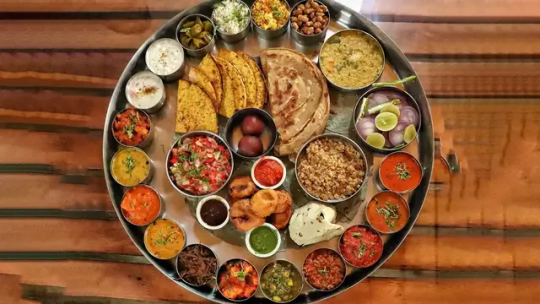


#food#indian food#thali#vegetarian#naan bread#naan#curries#food photography#rice dish#dal#roti#papadum#chutney#chapati#tikka#samosa#tandoor#biryani#lentil soup#delicious#vegetarian food#vegetarian cooking#vegetarian recipes
10 notes
·
View notes
Text
🍽️ Erleben Sie authentische indische Küche im Herzen von Zürich im Restaurant Vulkan! 🇮🇳✨ Genießen Sie unser indisches BBQ aus dem traditionellen Tandoor, Indisches Currys und ein reichhaltiges indisches Buffet.
🌶️🍲 Vegetarische und vegane Optionen sind ebenfalls erhältlich, um jeden Gaumen zu verwöhnen. Besuchen Sie uns und tauchen Sie ein in die Aromen Indiens - mitten in Zürich! 🌍
💫 Guten Appetit!
📍 Adresse: Restaurant Vulkan Klingenstrasse 33 8005 Zurich
📞 Telefon: +41 44 273 76 67
ℹ️ Mehr Informationen auf unserer Website: https://restaurant-vulkan.ch
#IndischesEssenZürich#RestaurantVulkan#IndischeKüche#ZürichEssen#Tandoor#IndischesBBQ#VegetarischZürich#VeganesEssen#breakfast#cooking#delicious#dinner#food#recipes#dessert#cake#chocolate#baking
0 notes
Text
youtube
Are you considering the SS2 Square Charcoal Tandoor Oven? Look no further than Tandoor Morni for an unparalleled culinary experience. Our SS3 Deluxe Tandoor combines cutting-edge technology with timeless craftsmanship, ensuring a perfect blend of luxury and functionality. Elevate your cooking with this premium appliance that promises exceptional performance and durability. Visit Tandoor Morni today to bring the epitome of culinary excellence into your home.
0 notes
Photo

Garlic Naan Recipe For garlicky bread made with yogurt-enriched dough that is cooked in a hot cast iron skillet until nicely charred, try Chef John's recipe for garlic naan.
0 notes
Photo

Recipe for Garlic Naan Try Chef John's garlic naan recipe for garlicky bread made with yogurt-enriched dough that's cooked in a hot cast iron skillet until nicely charred. 1 package active dry yeast, 1/4 cup plain yogurt, 1 teaspoon white sugar, 1/4 cup butter, 2 cups bread flour or more as needed, 1/2 cup warm water or more as needed, 2 cloves garlic minced, 1 teaspoon kosher salt, 1/4 cup chopped cilantro
0 notes
Photo

Yeast Bread - Garlic Naan For garlicky bread made with yogurt-enriched dough that is cooked in a hot cast iron skillet until nicely charred, try Chef John's recipe for garlic naan.
1 note
·
View note
Photo

Garlic Naan - Bread Try Chef John's garlic naan recipe for garlicky bread made with yogurt-enriched dough that's cooked in a hot cast iron skillet until nicely charred.
0 notes
Text
Offal, aka organ meats, are about to make a comeback. Yes, I predict that brains, livers, spleens, tongues and testicles will feature heavily on the menus of Israel’s (and the diaspora’s Jewish/Israeli-style) hottest eateries by this time next year — if they aren’t already. Why? Because young chefs are increasingly inspired by traditional Jewish dishes, driving a return-to-roots style of cooking. And these old-school classics are notably innard-heavy.
Offal is an oxymoron; it’s both a poor-person food, which is why it was so popular in the shtetl, and a celebratory food, eaten on Shabbat and festivals. Many Sephardic cultures consider it a delicacy. Read on and decide for yourself.
Let’s start with an old Ashkenazi classic: chopped liver. While for me, it will always be in style, many of my contemporaries don’t feel the same. Luckily, young Jewish chefs have already set their sights on it, and may well have the power to convert millennial diners. Take Anthony Rose’s recipe in “The Last Schmaltz,” which sears the livers, then deglazes the pan with arak before blending, serving the chopped liver with thyme-scented caramelized onions.
Another well-known offal dish is the Jerusalem mixed grill. Made with chicken giblets and lamb parts, and seasoned with onion, garlic, black pepper, cumin, turmeric and coriander, this classic street food is believed to have originated sometime between 1960-1970 at one of two (now feuding) restaurants in Jerusalem’s Machaneh Yehuda Market. While the Jerusalem grill is far younger than most Jewish offal dishes, it originated in a similar way: Butchers had a surplus of unwanted offal so they sold it off cheaply, then some savvy chefs turned the offal into a desirable dish. The mixed grill was one of the first offal dishes to receive multiple modern makeovers. At his restaurant Rovi, Yotam Ottolenghi adds baharat onions and pickles, while Michael Solomonov included a Jerusalem grill-Southern dirty rice hybrid in “Israeli Soul.“
Of course, this is not the first dish based around grilled offal; Tunisian Jews liked to throw a selection of lamb or veal innards onto the grill, which they called mechoui d’abats, and Baghdadi Jews sought a similar smokiness, which they achieved by cooking chicken livers on the tandoor.
Roman Jews preferred their offal battered and fried, rather than grilled. Few know that their famed carciofi alla giudia (deep-fried artichokes) was often served alongside fried sweetbreads, livers, and — most notably — brains. North Africa’s Sephardi communities loved their brains, too, commonly serving them in an omelet called a meguina or menina on festive occasions. Meir Adoni referenced this love in his brain fricassee — a North African-French fusion dish of veal brains inside a croissant with harissa and preserved lemon — at his New York restaurant Nur.
Offal was also commonly used to add a depth of flavor to a soup or stew. Yemenite Jews — one of the few communities who continue to cook traditional offal dishes — make a soup with bulls’ penis and cows’ udders, while Eastern European Jews, particularly of Polish descent, continue to add kishke — a sausage made of stuffed beef intestine — to their weekly Shabbat cholent. A slow-cooked stew called akod is one of the better-known dishes of Tunisian Jewish cuisine, where tripe flavored with cumin, garlic, harissa and tomato paste is the star of the show. Moroccan Jews eat a similar dish on Passover, which ditches the tomato paste but adds liver, heart, and beef dumplings.
Admittedly, there are some offal-based dishes that may find it trickier to stage a comeback. Ptcha – an aspic that reached its height of popularity in shtetl-era Ashkenazi communities — is arguably top of the list. However, it’s not without hope; ptcha was actually born in Turkey in the 14th century as a peasant soup made with lamb’s feet, served hot. This, I’d wager, is a more palatable gateway (it’s basically bone broth) to the Eastern European version, which opts for calves’ feet and allows the soup to cool and set into a jelly, thanks to the gelatin in the hooves.
It only takes one dish to change your view of offal from weird and unappetizing to tasty and versatile. If livers, brains and tripe were good enough for our ancestors, not to mention famed chefs, who are we to turn up our noses? Happy eating!
86 notes
·
View notes
Text
Authentic Punjabi Food Near Queens, NY!
Craving bold, delicious Punjabi flavors? Baani Sweets brings you the best Punjabi food near Queens, NY, from spicy curries to fresh, warm bread straight from the tandoor. Experience quality ingredients and a taste that feels like a North Indian home. Perfect for quick takeout or family dinners. Contact us now to satisfy your craving!

#punjabi food near Queens NY#punjabi dhaba in Long Island#veg catering services New Jersey#punjabi restaurant near Pennsylvenia#Veg Punjabi Food New York#Quality Indian Sweets Near Queens NY#Vegetarian Indian Restaurant near Connecticut#pure vegetarian indian restaurant New Jersey#pure vegetarian indian restaurant Queens NY#punjabi cuisine Provider Queens New York
2 notes
·
View notes
Note
I haven't seduced you through food in a while... that's terrible. There's no way I'm losing my touch 😞
-----------------------
(Sidenote there's no way I [or MC] will let Xavier leave Earth until he's tried some of our best meat dishes. Like where exactly do you think you're going and you haven't even had a South African braai, Argentine steak, Southern US BBQ etc etc??? 214th Spring deadline be damned.)
------------------------
*today takes you to a Central Asian restaurant to try samsas. They're basically a clay oven/tandoor baked regional pie filled with meat and spices. This Uzbek restaurant specialises in them and the recipe is to die for. It'll be served with a spicy tomato chilli sauce, cucumber salad and tea.*
-🌺
*He's ecstatic*
Can we come back soon? Are you done? Can I finish that? I'll help you.
We should get some to-go. I'll clear space in my fridge. What else do they have? We should order one of everything...
...I love you by the way.
2 notes
·
View notes
Text
i finally sorted out my feelings about the people who cook things online, and the people in the comments who are like “are you gonna season that”, and then the person cooking reacting negatively to that and feeling kind of attacked (spoilers, they are)
i have cooked professionally for almost 20 years, at varying levels and in several restaurant types. fine dining, quick casual, fast food, i have done ALL OF IT
so i say, with some authority, that both of those camps of people don’t know how to cook for shit. at all.
the only difference between the ‘season your food’ crowd and the ‘i put salt and pepper on it’ crowd is that one of those crowds has overcooked or burnt spices on the outside of their chicken (depending on what they are making both camps do because the latter burnt their black pepper)
if you actually know how to cook, just salt is sometimes not only enough seasoning, but the only correct seasoning.
if you look at cultures that use loads of dry spices (india hello) they Don’t typically just cover their chicken in spices without thinking about the Application of those spices. Want to add dry spices to chicken? it almost always come with a marinade that includes yogurt, or coconut milk, or something that introduces moisture to that situation. why? so when they stick that chicken on the side of their tandoor, the spices don’t burn. why is there loads of heavily seasoned and spiced stews there? to flavor the sauce component of their stew with the spices they want and actually TASTE those spices that were cooked properly
my point is, taking 8 bottles of spices and throwing it on the outside of your chicken and searing it is a shit way to add flavor. and i remain firm that both of these groups of people are bad at cooking, and i don’t want to eat at their house
it’s also REALLY STRANGE BEHAVIOR, for (white) people to make videos of their spice cabinets and doing exactly what i have described, but with the smug superiority that black people will think they are doing a good job. it’s really fucking strange to do this, and it happens all the time. especially since i firmly believe the vast majority of people who would show up in those comments to pat that(white) person on the back for their use of spices Also can’t cook
i encourage Everyone to learn how to use spices by learning recipes and techniques from places that are Good At This already. and apply those new techniques to your everyday cooking. this is how you learn how to cook. not by yelling at people cooking shitty food online
if salt is not enough to make your burger or your chicken or steak or whatever taste good, you have failed in the execution of cooking that thing, then those seasonings are masking your inadequacies at cooking
i just want to reiterate: spices TASTE GOOD. and i use them ALL THE TIME
5 notes
·
View notes
Text
The Local Cuisine of Hunza Valley, Pakistan
The local cuisine of Hunza Valley is known for its simplicity, healthfulness, and unique flavors. The region's cuisine largely reflects the agricultural practices and natural resources of the area. Here are some popular dishes and ingredients you can find in the traditional cuisine of Hunza Valley:
1. Chapshuro: A savory meat-filled bread, typically made with minced meat (often mutton or beef) and spices. It is cooked in a traditional tandoor (clay oven) and served hot.
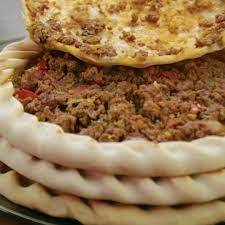
2. Harissa: A traditional porridge-like dish made with whole wheat and meat (usually chicken or lamb). The meat is slow-cooked with spices and then mixed with wheat to create a thick and hearty dish.
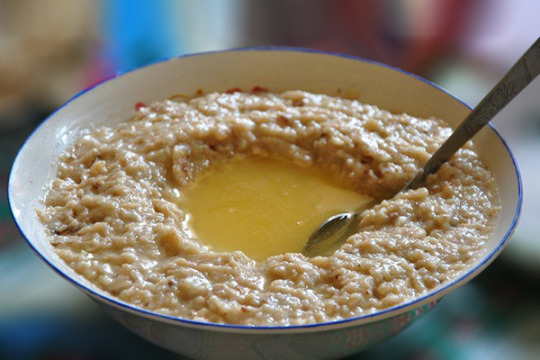
3. Momo (Mamtu): Dumplings filled with minced meat (mutton, beef, or chicken) and vegetables. They are usually steamed and served with a spicy tomato-based dipping sauce.
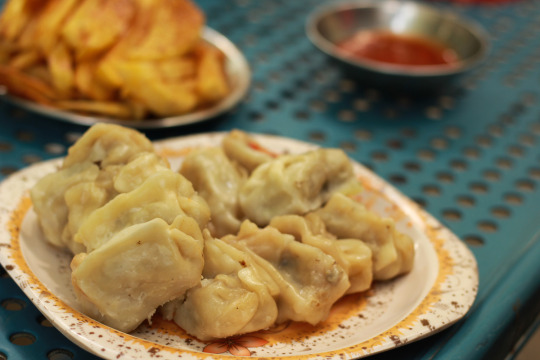
4. Dirham Fitti: A popular breakfast dish made with wheat dough that is rolled and cooked on a griddle. It is usually served with butter or ghee and accompanied by local cheese or honey.
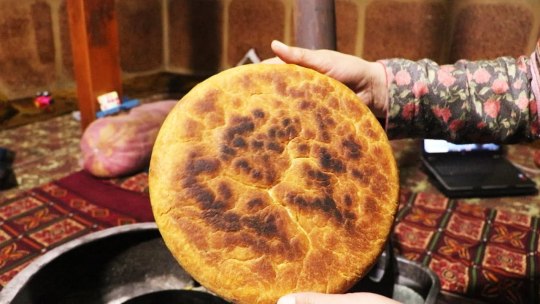
5. Apricot-Based Dishes: Hunza Valley is famous for its apricots, and the fruit is used in various dishes. Apricot oil is often used in cooking, and dried apricots are used in stews and desserts. One popular apricot dish is "Ghulay Poot," a sweet and sour apricot soup.
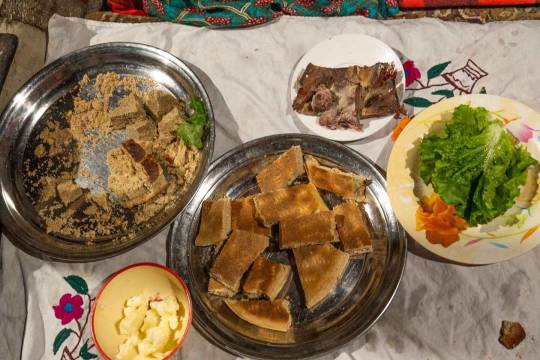
6. Local Cheese: Hunza Valley is known for its fresh and organic dairy products. One of the most famous cheeses is "Chhurpi," a hard cheese made from yak's milk. It is often served as a snack or grated over dishes.
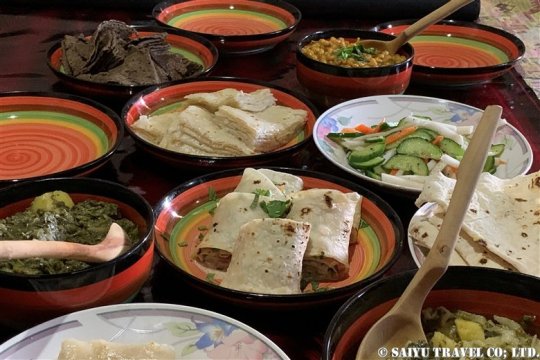
7. Butter Tea: A traditional hot beverage made by boiling tea leaves with water, salt, and butter. It is a staple drink in the region and is believed to provide warmth and energy in the cold mountainous climate.
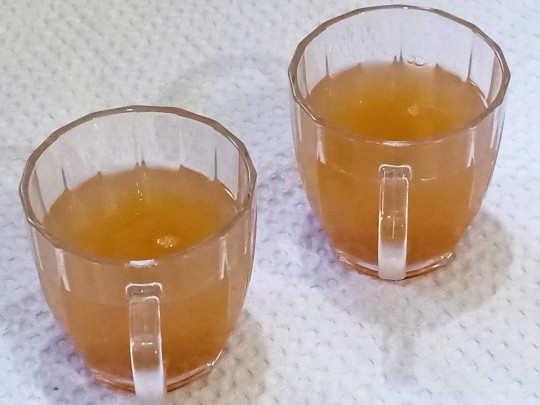
8. Walnut Cake: Hunza Valley is abundant in walnut orchards, and walnuts are often used in desserts. Walnut cake is a popular sweet treat made with ground walnuts, sugar, and eggs.
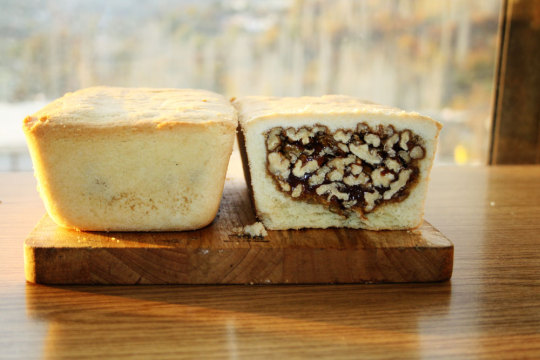
9. Local Bread: The bread in Hunza Valley is typically made with whole wheat flour and baked in traditional tandoors. "Skit" is a popular type of bread, which is thin and unleavened.

These are just a few examples of the delightful cuisine you can experience in the Hunza Valley. The focus on fresh, locally sourced ingredients, and the simplicity of the recipes make the food of Hunza Valley both delicious and healthy.
Planning a trip of Hunza Valley, Pakistan with Adventure Seekers Club sounds exciting. The trip can be customized based on your preferences, group size, and the availability of activities.
6 notes
·
View notes
Text
The Chili Indian Tree Restaurant | Top Indian takeaway near me | Order from the best Indian restaurant


The Chili Tree Indian stands as a testament to the rich culinary heritage of Indian cuisine in East Sussex. It has earned the title of the Top Indian takeaway near me for many food enthusiasts, and with good reason.
From the ambience to the attention to detail in every dish, those who Order from the best Indian restaurant find themselves immersed in a feast of flavours. The chefs, trained in the art of traditional Indian cooking, exhibit a passion that translates into the taste of every dish served. Famed as the home to the Best chicken biriani in East Sussex, The Chili Tree Indian has mastered this classic Indian dish. The biriani, cooked with fragrant spices and succulent chicken, is a favourite among locals and visitors alike. But it doesn't end there. The restaurant's unique offerings, like Chicken Balti Pebsham and Special Fish dishes in Pebsham, stand out on the menu. The Kolkata Mungsho, a classic Bengali dish, and Mungsho Shatkora, a tangy delight, are unparalleled in taste and presentation.
Those craving something from the tandoor will find the tandoori takeaway menu filled with irresistible choices. Dishes like Tin Rang Murgh and Tikka Masala are prepared in traditional tandoor ovens, ensuring authenticity and a rich, smoky flavour. Vegetarians can join in the culinary adventure. The Vegetable Side Dishes in Hastings offer various options to complete the meal. The Cherry Tomato Murgh is a must-try, a testament to the chefs' creativity, blending tomatoes with chicken in an unexpectedly delightful way.
The reason behind The Chili Tree Indian being the top Indian food-serving restaurant lies in its unwavering commitment to quality and authenticity. Every spice is carefully selected, recipes refined, and dishes celebrate Indian culinary art. Whether it's a meal for one or a feast for a family, this restaurant goes beyond mere dining. It offers an experience, a journey through India's diverse and rich food landscape, right here in the heart of East Sussex. Taste, authenticity, and innovation make The Chili Tree Indian a culinary destination. From the sumptuous chicken to the flavoursome fish dishes, it's more than a meal – an indulgence in Indian culinary mastery. Visit today, and let your taste buds embark on an unforgettable journey.
2 notes
·
View notes
Text
The tandoori chicken is a dish of Indian origin that takes its name from the Tandoor, the cylindrical clay oven (or in the shape of an upturned bell) in which this preparation is traditionally cooked. Making it at home with tools common to all kitchens is very simple. It is enough to marinate the chicken with yogurt, lime (or lemon), ginger, garlic and tandoori masala, the mixture of spices that, in addition to giving the unmistakable flavor, will give the typical reddish color. The tandoori chicken can be grilled or baked, as in the recipe we show below. You can accompany the chicken with plenty of rice pilaf or, if you like spicy flavors, you can also try the chicken curry.
#Chicken#Dinner#SecondDishes#chicken#dinner#dinnerideas#follow4follow#food#foodporn#indiancuisine#indiandinner#indiantypicalcuisine#instafood#instalike#like4likes#secondcourse#seconddish#tandoori#tasty
2 notes
·
View notes
Text
Makes: 6 naans, ~15-16cm / 6 - 7" diameter
Prep Time20 mins
Cook Time10 mins
Dough rising:2 hrs
Ingredients
1 tsp instant / rapid rise yeast (Note 1)
1/2 cup warm tap water (~40°C/105°F in temperature)
1 tbsp white sugar
2 tbsp milk , full fat (low fat ok too)
1 1/2 tbsp whisked egg , at room temp (around 1/2 an egg, Note 2)
1/2 tsp salt , cooking / kosher
1 3/4 cups bread flour , or all-purpose/plain (Note 3)
30g / 2 tbsp ghee or unsalted butter , melted (Note 4)
Instructions
Bloom yeast: Mix yeast with warm water and sugar in a small bowl. Cover with cling wrap, leave for 10 minutes until foamy.
Egg and milk: Whisk milk and egg together.
Flour: Sift flour and salt into a separate bowl.
Add wet ingredients: Make a well in the flour, add yeast mixture, and butter and egg mixture. Mix together with a spatula. Once the flour is mostly incorporated, switch to your hands and bring it together into a ball. No kneading is required.
Proof 1: Cover the bowl with cling-wrap, then leave in a warm place for 1 - 1.5 hrs until it doubles in size. (Note 7)
Cut into 6 pieces: Place the dough on a lightly floured surface. Cut into 6 equal pieces, then shape into balls into spheres with a smooth surface by stretching the surface and tucking it under (see video).
Proof 2: Place balls on a lightly-floured tray or plate. Sprinkle lightly with flour, cover loosely with a lightweight tea towel. Put in a warm place to rise for 15 minutes until it increases in size by about 50%.
Roll out: Place a round on a lightly-floured work surface, flatten with your hand. Roll out into 3 - 4mm / 0.12 - 0.16" thick rounds (about 16cm / 6.5" wide).
Heat skillet: Rub a cast iron skillet with a very light coat of oil using 1/2 tsp oil on a paper towl (unless already well seasoned). Set over high heat until you see wisps of smoke. (Note 8 for other pans)
Cook naan: Place a naan dough in the skillet and cook for 1 to 1 1/2 minutes until the underside is deep golden / slightly charred – the surface should get bubbly. Flip then cook the other side for 1 minute until the bubbles become deep golden brown.
Cook remaining naan: Remove, set aside, and repeat with remaining naan, taking care to regulate the heat of the skillet so it doesn't get too hot.
Finishing: Brush freshly cooked naan with melted butter or ghee (or garlic butter, Note 5). Sprinkle with nigella seeds and coriander. Serve hot!
Notes
1. Yeast – This recipe works with dry active yeast too, but the naan is not quite as soft. Follow recipe as written, including yeast quantity. Also note, rapid-rise/instant yeast normally does not need to activated in warm water but it's a very specific step for this recipe because it yields a softer naan than adding the instant yeast directly into the dough. (Yes, we made a LOT of naan to try out all the various combinations to figure out the best one!).
2. Egg – I know this sounds strange, but we need 1/2 a large egg for one batch of this naan! Any more and it dries out the inside too much.
Just crack an egg in a bowl, whisk, then measure out 1 1/2 tbsp. OR just make a double batch of this naan so you can use one whole egg!
3. Flour – Bread flour makes the softest, fluffiest naan. But all-purpose/plain flour is very nearly as good. I wouldn't make a special trip to the supermarket just to get bread flour. But if you've got it, use it!
4. Ghee is clarified butter, one of the traditional fats used in Indian cooking. It is simply butter without the water and milk solids, so you have pure butter fat. It has a more intense flavour than butter. Either buy it, make it (it’s easy and keeps for months) or just use normal butter!
5. Garlic butter: Place 2 tbsp/30g salted butter or ghee and 1/2 tsp crushed garlic* in a small bowl. Microwave until butter has melted (do it in bursts so it doesn't explode!!). Stand for a couple of minutes to let the garlic flavour infuse before using.
* Garlic crushed using a garlic crusher or microplane
6. Cheese – Any melting cheese works fine here, though bear in mind if you use mozzarella it doesn't have much flavour. Monterey Jack is a good option that has flavour and stretches nicely!
7. How to promote dough rising – One of my favourite places to proof dough is in my dryer!!! Draught proof, easy to heat up a small space. Just run it for a couple of minutes, put the bowl in, close the door and leave it. Just don't turn it on!
8. Cooking pan – If you don't have a cast iron pan, you can use another type of skillet. Pour 1/2 tsp oil on a paper towel then lightly rub the base. DO NOT use a non-stick pan – the high heat required to properly cook naan will destroy the non-stick coating!
Here is the cast iron skillet I use - it's a Lodge (excellent value, indestructible!)
9. Make ahead naan – A last-minute discovery was that naan is great for making ahead! In fact, the bread flavour improves overnight, which is typical of most breads.
Make the dough up to the end of Step 5 - Proof 1. Then after the dough has doubled in size, put the bowl with the dough it in the fridge overnight (I've done 24 hours). Do not punch dough down or touch it – just put it in as is. The fridge stops the dough from rising any further.
Take the bowl out of the fridge at least a couple of hours before cooking. We need to take the fridge chill out of it completely otherwise the dough won't rise for Proof #2 (Step 6). Cut into 6 pieces, then proceed with recipe from Step 6 onwards.
10. Nutrition per naan – Excludes extra ghee or butter brushed on top (and certainly excluding the cheese – I have not control over how much you choose to stuff it with!)
3 notes
·
View notes